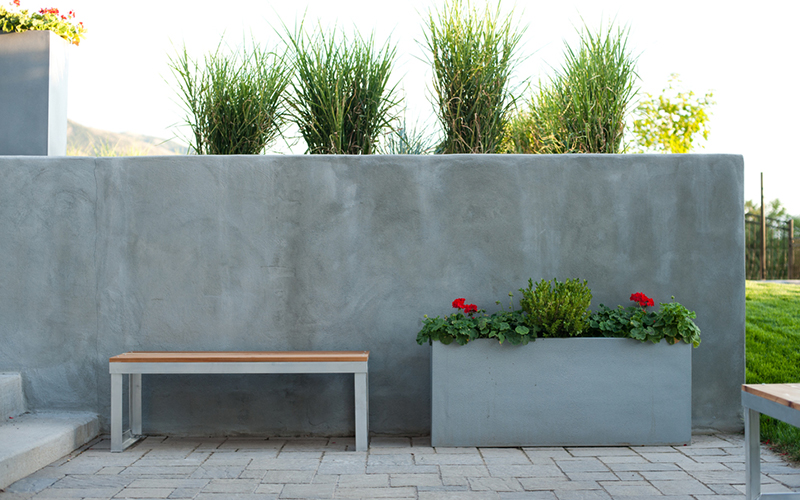Modern landscape features offers beautiful designs for retaining all design ideas. Sloping terrains may lead to more designed structures and the soils are restrained. The retaining walls help to make the land architects to make sure that the soil bounds the hillside and the higher landscapes that provides spectacular and wonderful pictures cape.
Specially designed structure of the retaining wall helps to hold the soil so tightly on one side and free standing on the other sides. To accommodate the topography which is uneven with the grades of changing trends? These walls provide several cuts to the slope to make use the places or the better use of slope on a cut and fill hillside lot. Retaining walls which are hardworking that leads to create level sports lawn or even drive ways also.
To raise the living spaces above the surrounding ground plain, where retaining walls are used on level ground. Properly designed retaining walls offers elevated planting areas. There is no end to the advantages of these huge and heavy burdened barriers but they are expensive and must be very firmly and sternly constructed to prevent failure.
Which is the thing that makes the retaining walls so challenging in their own strength? This is what which makes the best illustrated by the incredible loads they carry known as lateral earth pressure. This is created by more than just the weight of the soil. Water behind the wall causes building of hydrostatic pressure which is the reason for most of the wall failures. Only through adequately designed drainage structures and waterproofing systems can be best designed wall survive over time.
Retaining walls are divided into two types. These are further divided by height. Walls under four feet are designed in such a way and built by the respective contractor or per a landscapes architecture drawing as per provided. Retaining walls over four feet require much large area for footing due to increased lateral earth pressure. It must be designed by an engineer. They will specify the size and extent of footings. The amount of steel reinforcement required according to strict the loading calculations provided for the development of the designing of retaining walls.
Building often permits the structural calculations due to the damage caused by retaining wall failures. This is not only destroys the investment of the one individual. It also causes the significant damage to people and property. This ultimately leads to spoilage of liability. It is important for the unstable slopes and hit suffers huge banks of heavy rain that can lead to high saturated soil and several damaged mudslides. Even the California communities may require additional earthquake related design criteria.
Retaining walls can be a self-made. The project is constructed with wood. The affordable solution to soil erosion and runoff control due to the use of short timber walls. Concrete block retaining wall systems are growing in popularity now days. This is due to their enhanced sense of ethics and requires less area or space to achieve the optimum power and strength. The regional art in the form of dry stones and those from colonial times can still be functional today.
The several time tested veneer wall is the landscapes architect’s choice for high end landscaping. With the functional concrete masonry unit core, there is no end to the options for the swanky stone or brick veneer. This choice offers the designer unlimited options for making each Concrete Retaining Wall unique to a home site and allowing it to lend style to outdoor living spaces.
Always remember that however beautiful these walls may ultimately be they are powerful structure that must function as designed. This can only happen when they are composed of the proper materials and constructed by the quality contractors. Get these things right and we will be able to count on the financial investment maintaining both beauty and integrity for several decades to come.






